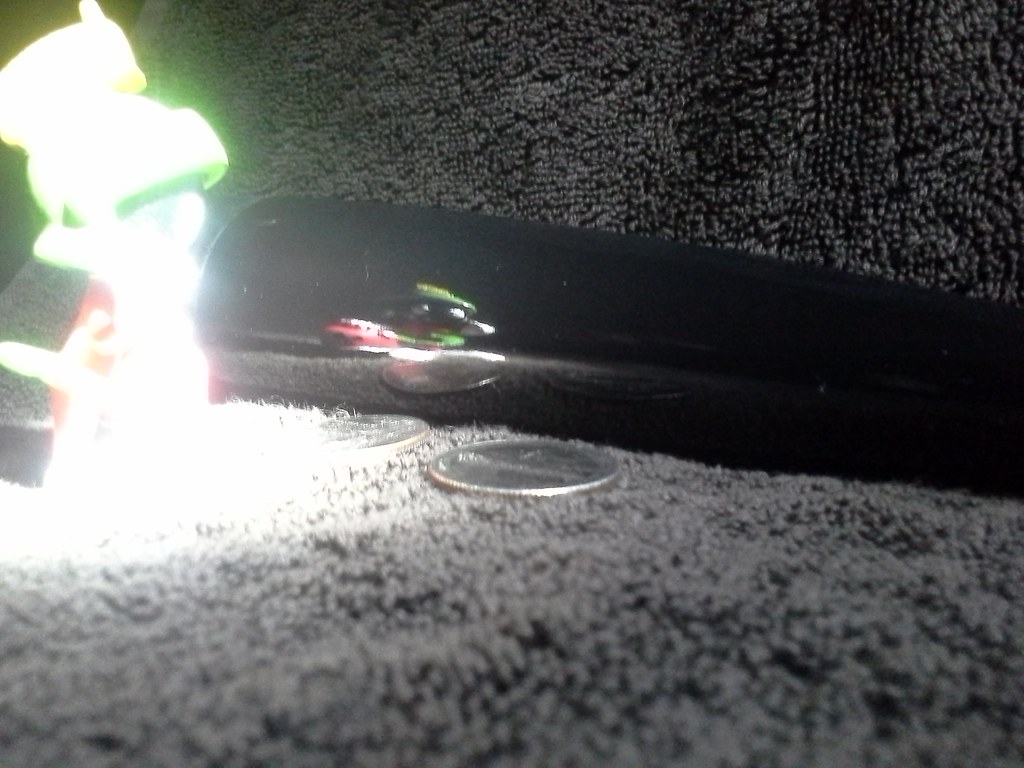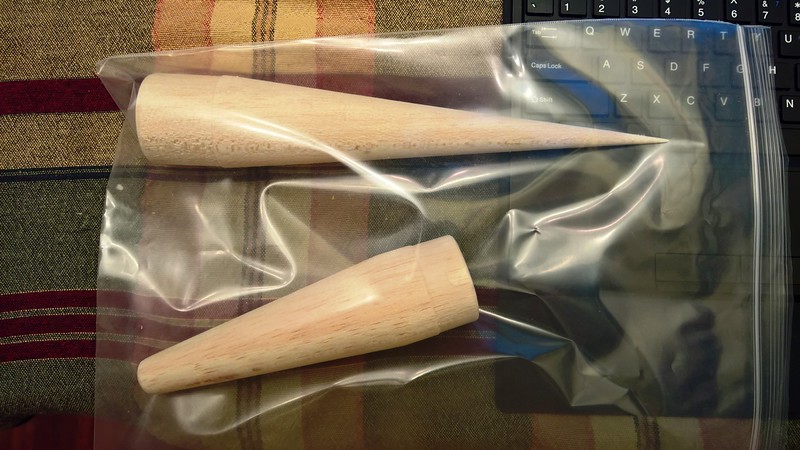EXPjawa
Well-Known Member
I have, like a lot of folks, been using CA glue to sort of harden balsa to make it easier to prep for paint. I've basically, just squeezed some onto the wood and smeared it around. But this seems like it just "case-hardens" the balsa. I hear people talking about "soaking" in CA, so I wonder if there's a different (better) technique.
Here's where I'm going with this: when I built Binary Star (https://www.rocketryforum.com/showthread.php?122619-Binary-Star&highlight=binary+star), I had issues with the survive-ability of the tips of the longish, conical nose cones. I wasn't CA coating the wood back then. I broke one tip just because I knocked the rocket over while building it. I was able to glue the tip back on, add so filler, and moved on. The second cone got broken when the wind knocked it off of my prep table at LDRS34. I wound up cutting the top 1/2" off of both cones, leaving them squared off. It has a different look than the original intent, but its still kind of neat. Since, I've built a BT60-sized Nike Smoke, this time CA'ing the whole upper half of the cone. It hasn't broken yet, but I'm nervous about it.
Now, I'm starting a BT60-sized Black Brant III, which will use an 8" long conical nose cone from Semroc. The cone just arrived yesterday, and its length and needly point make it quite fine at the tip (I'll have to get a picture later). Its kind of impressive to look at, since the tip's included angle works out to about 12 degrees. Now, to be more scale-like I will blunt it slightly, but it'll still have a long, skinny tip. I'd like to protect it from potential damage as much as possible. What's the best way to do that, short of a glass wrap?
Here's where I'm going with this: when I built Binary Star (https://www.rocketryforum.com/showthread.php?122619-Binary-Star&highlight=binary+star), I had issues with the survive-ability of the tips of the longish, conical nose cones. I wasn't CA coating the wood back then. I broke one tip just because I knocked the rocket over while building it. I was able to glue the tip back on, add so filler, and moved on. The second cone got broken when the wind knocked it off of my prep table at LDRS34. I wound up cutting the top 1/2" off of both cones, leaving them squared off. It has a different look than the original intent, but its still kind of neat. Since, I've built a BT60-sized Nike Smoke, this time CA'ing the whole upper half of the cone. It hasn't broken yet, but I'm nervous about it.
Now, I'm starting a BT60-sized Black Brant III, which will use an 8" long conical nose cone from Semroc. The cone just arrived yesterday, and its length and needly point make it quite fine at the tip (I'll have to get a picture later). Its kind of impressive to look at, since the tip's included angle works out to about 12 degrees. Now, to be more scale-like I will blunt it slightly, but it'll still have a long, skinny tip. I'd like to protect it from potential damage as much as possible. What's the best way to do that, short of a glass wrap?
Last edited:





